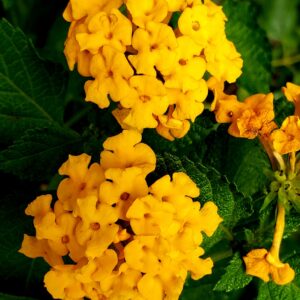- What is the Best Soil for Mums?
Chrysanthemums can survive in most soils, but they thrive in well-draining soil with consistent moisture. Growing mums in hard, dry soil prevents the roots from becoming well established, while wet, boggy soil drowns the roots. Finding the middle ground is key.If you’ve planted other perennials, then you already know how to plant chrysanthemum. To create a good soil for your mums, work your soil to a depth of 8 to 12 inches. Mix in 2 to 4 inches of organic material, such as compost or peat moss. The perfect soil texture can be tested by taking a handful and squeezing. When you open your hand, the soil shouldn’t clump or quickly fall apart. It should simply crumble. - How Often Should Mums Be Watered?
Mums require even moisture for the best growth. Consistent watering throughout the spring, summer and fall is essential. Once the ground is frozen in the winter, watering can be suspended until spring warms the soil.Early morning watering, to a depth of 6 to 8 inches, is recommended. The ideal watering method for mums is one that applies moisture directly to the base of the plants. This prevents moisture from becoming trapped in the thick foliage. Soaker hoses can provide even, consistent moisture directly to the ground, and a water timer saves you the hassle of having to remember to manually water. - Is Fertilizer Necessary for Mums?
All plants require nutrients. Fertilizing your mums gives them an added boost of essential nutrients for the best growth. The primary growth of chrysanthemum plant varieties takes place in spring and early summer. Growing chrysanthemums are heavy feeders. Consistent applications of quality fertilizers will help your mums grow larger and produce more blooms.Choose a balanced, water-soluble fertilizer for monthly application from early spring through July. If you plant fall mums, wait to begin their fertilization until the spring.
Cream Chrysanthemum
$800 – $1,200
Chrysanthemum are a member of the Compositae family and are available in a wide range of brilliant colors, shapes and sizes. First cultivated in China over 6 centuries ago, this type of daisy was initially grown as an herb associated with the power of life. The chrysanthemum flowers range from dazzling whites to deep bronzes, and the hardy plants are highlighted with full, dark green leaves.
Chrysanthemum flowers look like they have a multitude of petals, but each individual petal is actually a small floret. There are two different types of florets: ray and disc florets. Ray florets are what we traditionally see as the petals, while the disc florets create the center buttons. When the florets are all clustered together, they give us what we know and love as a mum bloom.
| SIZE: | Small, Medium, Large, Extra Large |
|---|






Reviews
There are no reviews yet.